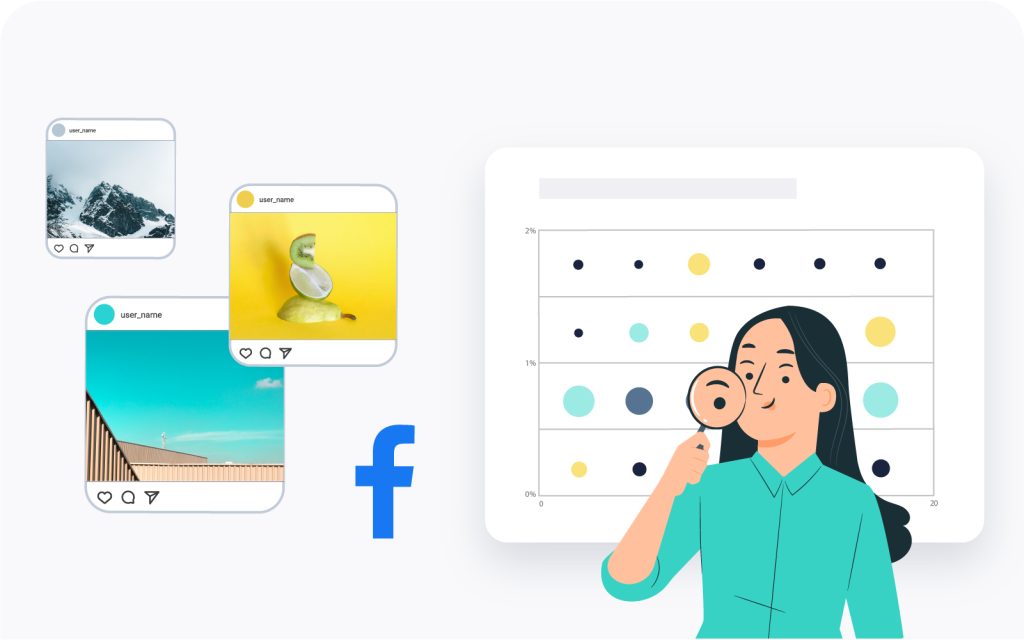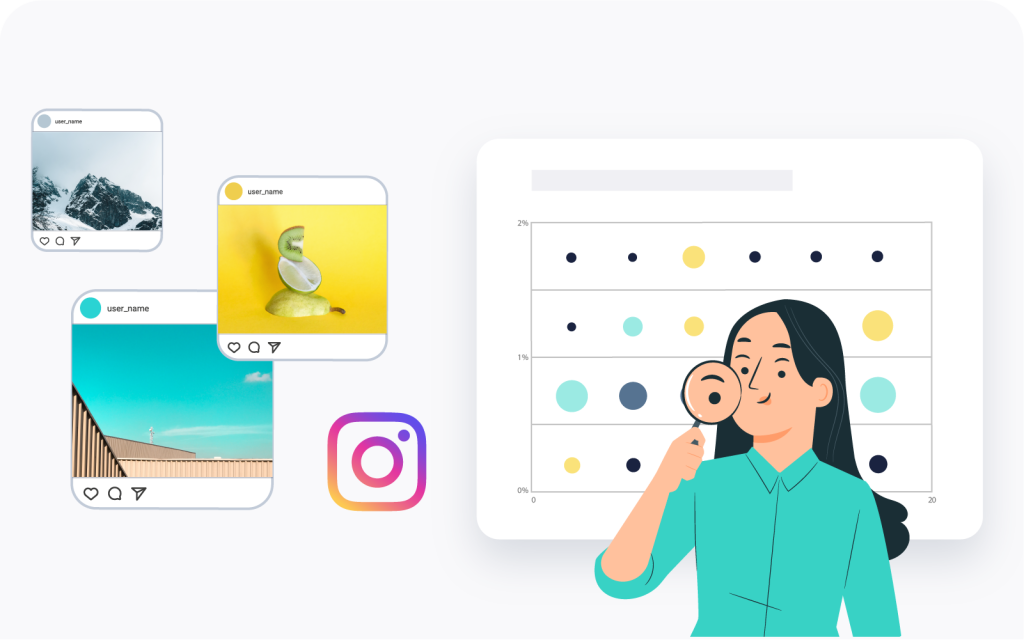Social Media Competitor Analysis and Benchmarking: A Step-by-Step Guide
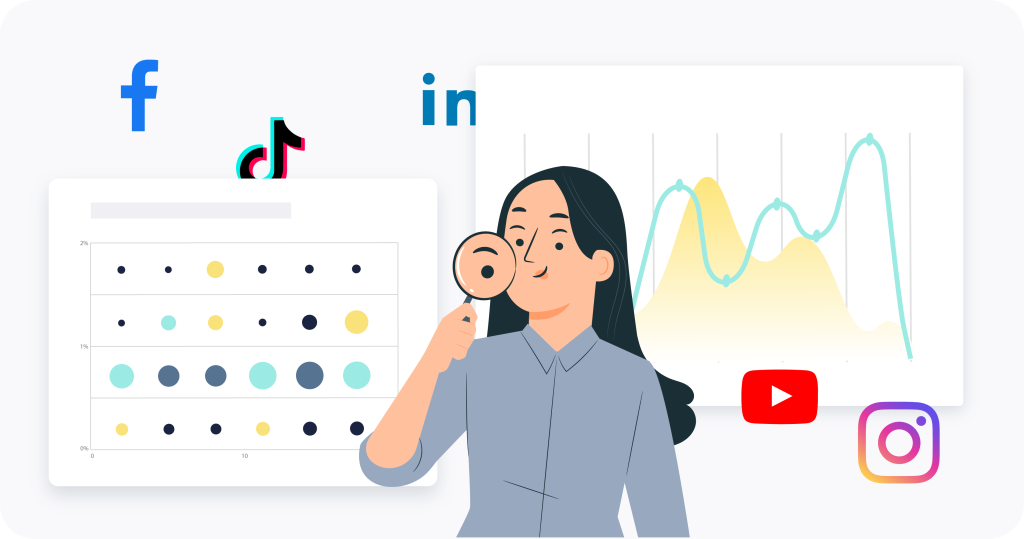
Are your competitors outperforming you on social media? Can you learn something from their approaches in order to help you extend your reach and increase brand awareness? And, if you don’t know the answers to these questions, how can you go about finding answers to them?
Social media competitor analysis is the primary way to learn about how you stack up against your competitors in the social media world, as well as how you ultimately may be able to improve the performance of your content. Therefore, it is no surprise why businesses or individuals who are active on social media might want to find out if others in their industry or field are having success and why that might be the case.
However, some may think they are conducting social media competitor analysis, but are they really doing it right. The question then becomes what do you need to know in order to successfully conduct social media competitor analysis.
In reality, social media competitor analysis is more than just looking at the posts of other profiles and trying to gain some insights into what they are doing, especially if they have seemingly successful profiles. First and foremost, social media competitor analysis is a process that is based on analyzing a wide range of data. This means that effective social media competitor analysis requires a tool that is able to provide in-depth comparative insights. However, in order to use this tool correctly, there are a number of different best practices to discuss. While this may seem a bit overwhelming at first, we will show you how to do social media competitor analysis in 6 easy steps.
What is Social Media Competitor Analysis?
To begin, let’s explain what exactly social media competitor analysis is and why you should consider doing it. You should know that it involves following a step-by-step process of research that includes using a social media tool for advanced analysis. At its core, social media competitor analysis is the process of finding out 1) how you currently compare to your competitors across various metrics, 2) the core reasons why you may be performing well or not, and 3) approaches you can implement in order to improve your performance.
Many may think that social media competitor analysis is simply comparative, meaning that you are looking at only benchmarking statistics. While social media benchmarking, which we will address in the next section, is a key component of social media competitor analysis, it is only one part of it. Social media competitor analysis goes far beyond simply comparing where you stand, since it can provide you with important insights about what your strengths and weaknesses are vis-à-vis your competitors. The ultimate goal of social media competitor analysis is to learn how you can improve your own performance.
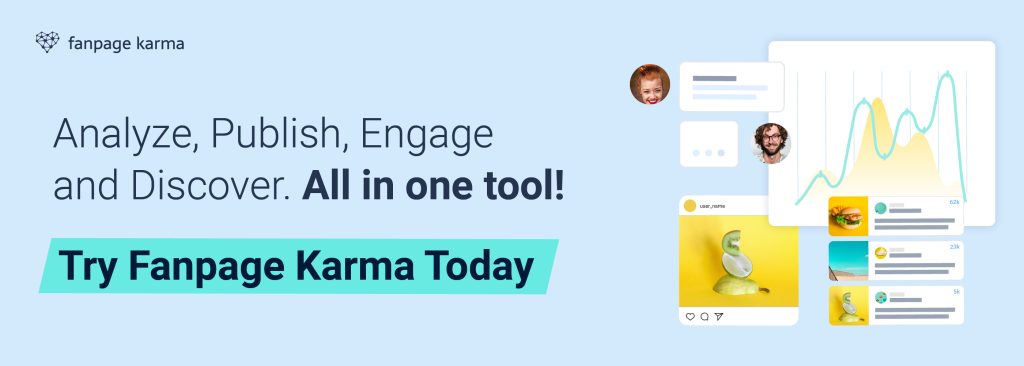
What is Social Media Competitor Benchmarking?
Even though we already mentioned that benchmarking is a part of the social media competitor analysis process, it is nonetheless talked about as a step in and of itself. One of the main advantages of social media competitor benchmarking is that it shows you where your profiles stand in relation to your competitors and what goals you should consider setting. For example, if one of your profiles has a 1% average engagement rate, does that mean it is successful? Or do you have some work to do since other profiles have a higher engagement rate?
There are some different approaches you can take when conducting a social media benchmarking analysis. In terms of looking at social media profiles for a specific industry, benchmarking can mean a few different things. For instance, you may be wondering whether how your profile stacks up among hundreds of other profiles that are in a general industry or post about similar topics, but may or not necessarily be direct competitors of yours in terms of product or service offerings. However, for many companies, benchmarking social media profiles is about finding out relative averages for direct competitors profiles so you get a better idea of where you stand.
If you are using the approach that requires tracking due to the size of your industry, you should search for a tool that allows for unlimited profile tracking. This is because many social media tools limit the number of profiles you can track, which will limit your social media benchmarking analysis in this case.
How to do a Social Media Competitor Analysis and Benchmarking Evaluation
We want to give you a social media competitor analysis template that you can follow in order to better understand how to conduct such an analysis. When looking at your competitor’s marketing strategy, a comprehensive social media analysis can help you uncover successful content types and formats, ideal posting times, as well as trending hashtags and keywords.
As we have mentioned before, in the data-drive world of social media marketing, it pays to invest in an industry-leading social media tool. For our example analysis, we will be using the all-in-one social media tool Fanpage Karma which allows for unlimited profile tracking. All the tables, charts, and graphs that are presented below were generated by this tool.
In showing you how to do a social media competitor analysis, we will be providing a real-world example. In this case, we are analyzing various streamers such as Amazon Prime, Apple TV, Disney+, Max, Netflix, Paramount+, and Peacock TV in order to see how these profiles compare to each other regarding social media performance. We will also show you why one or more of these profiles may be more successful than the others, as well as how these streamers may be able to improve their performance. We will use the performance data from these companies across social media networks while showing how a social media competitor analysis works.
We are only tracking 7 streamers across 5 social media networks (which means we are tracking 35 total profiles). However, Fanpage Karma offers unlimited profile tracking so we could theoretically be tracking hundreds or thousands of profiles for our analysis.
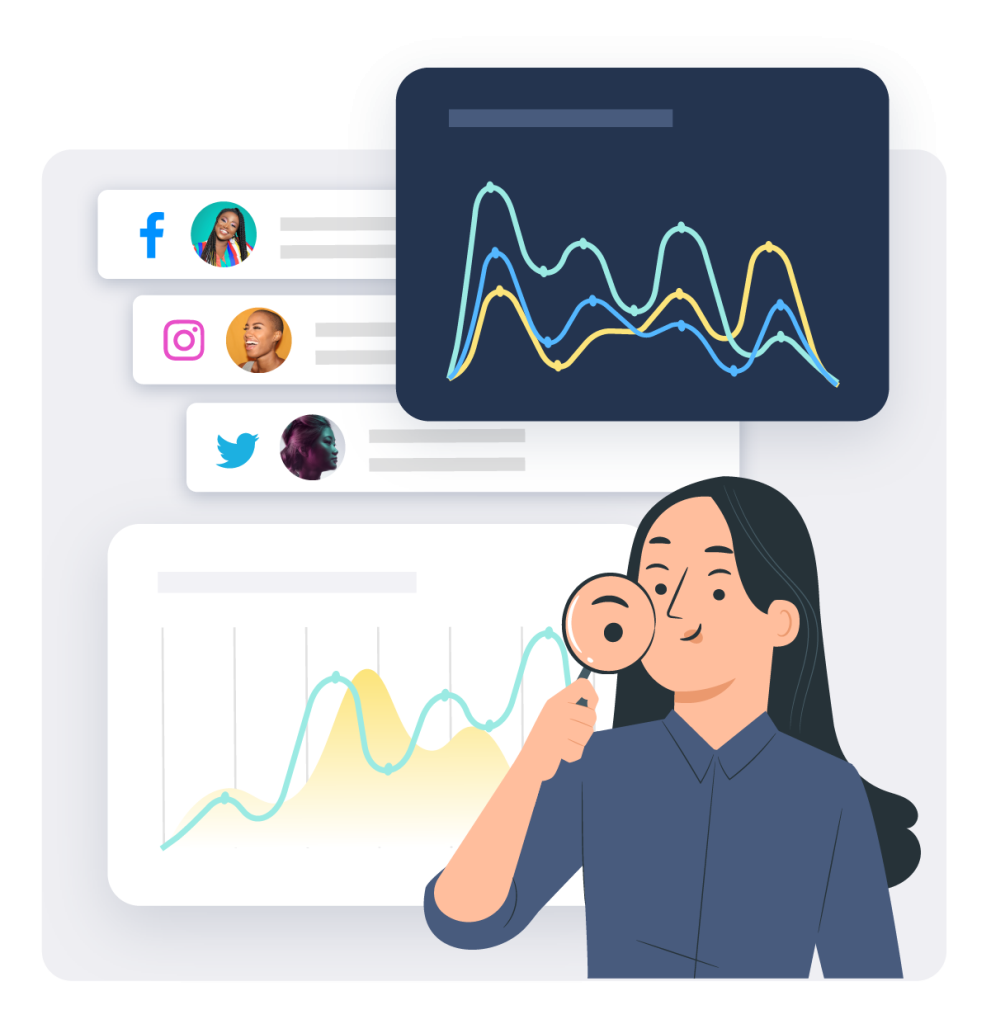
Step 1: Identify your Competitors
The first step in conducting your social media competitor analysis is to identify the competitors you are adding to your analysis. In other words, you need to define what businesses (or individuals) are comparable to yours in terms of the content they post, location, company size, and the extent of their presence on social media. It is important to find profiles that are similar to yours in these areas so your analysis can focus on profiles that are most likely to give you meaningful insights.
To begin, think about whether you want to compare yourself nationally or globally with competitors. It is important to also have a good idea about how large your industry is and how many competitors you are dealing with. There are social media tools available that allow you to research and discover profiles that relate to your industry or area of interest, and it is advisable to use these if you don’t already know all your competitors or profiles that are similar to yours.
It is also important for businesses who are interested in competitor analysis for social media, to make sure that you are tracking profiles of companies or businesses that share your own target audience. This doesn’t just mean that you work in the same industry, but that you are offering the same products or services in more or less the same locations. For instance, a small store based only in a local area may not find benchmarking against a company such as Walmart overly useful. This is because there is a substantial difference between the locations and reach of these companies, even if the target audience may overlap locally. The point here is that when conducing competitor analysis on social media, you should be tracking similar profiles in terms of size, industry, and/or location.
For our example analysis, we have identified 7 streaming companies that would be direct competitors in the streaming industry. Of course, there are some differences between them, namely their reach into international markets outside the US. However, they are also offering similar services and have a focus on more or less the same geographic markets, especially the US market.

Step 2: Choose the Platforms you are Interested In
When talking about how to do social media competitor analysis, it is important to specify that there are real differences between various social media networks, both in terms of the type of content that is posted as well as overall content strategies businesses use for each platform. For instance, the streamers we are using in our example may focus on different segments of their audience on different social media channels. Therefore, some businesses may have a strategic approach and/or content focus based on the target audience for a specific social media channel.
In terms of social media competitor analysis, you should normally think in terms of individual social media platforms rather than the social media performance of a competitor overall. This means you shouldn’t simply group together the statistics of all your competitor’s social media profiles and compare their overall numbers to your own overall numbers. Rather, you should group together profiles according to social media network (i.e. Facebook, Instagram, Twitter, TikTok, etc.) so you can obtain accurate benchmarks.
Once you have determined the competitors you want to track and identify on what social media networks you will focus on, all your profiles will be compiled on a social media dashboard. One last point here is the issue some may run into if the number of competitor profiles you can track is limited by your social media tool. For instance, if you have 20 competitors or similar companies that are of interest to your analysis, and you are tracking them across 5 social media networks, then you need to be able to track 100 profiles (5 x 20 = 100).
Many social media tools limit the number of profiles you can track well before you reach 100, which may result in you not being able to conduct an analysis of all those profiles or mandating that you pay extra to track more profiles. This is where finding a tool that allows you to track an unlimited number of profiles can be incredibly useful.
Step 3: Determine Important Metrics for Benchmarking and Analysis
What are the ultimate goals you are prioritizing in your social media strategy? Are you looking to increase your reach or followers, or are you striving for more interactions or engagement? Perhaps you want to improve in all of these areas?
You probably have a number of different goals in mind when creating your social media strategy, and choosing the right metrics to track is important in calculating your final social media ROI. So, what should you keep in mind when you are considering the metrics you should track for your social media competitor analysis?
First, you should understand how metrics are measured on social media channels, since there may be some differences among the different social media networks. Moreover, different social media tools may have different calculations for similarly named metrics.
Second, the availability of data will also be important for your social media benchmarking activities. Certain metrics may be available for competitive analysis for some social media networks and not for others. The availability depends on the social media network you are interested in as well as the social media tool that you are using. Keep in mind that social media tools may differ slightly in this regard.
Third, and perhaps most important, you need to know how the metrics you track relate to your wider goals. For instance, if you want to use social media as a means to raise awareness of new products you release, you may consider looking to grow your follower numbers and increase reach. Ultimately, the metrics you choose are up to you, but you need to know what they represent and why you are tracking them.
Step 4: Analyze your Data and Benchmark Against your Competitors
Once you have determined what competitors or industry-peers you want to track, the social media channels you are interested in, as well as the metrics you will track, it is time to do your benchmarking and analysis. Different businesses or individuals will ultimately have various aims in mind for this. However, we will take you through a general process that you can follow and fits almost any type of goal you have.
It makes sense to begin with the overall social media benchmarking analysis, since this can help you better understand where you stand in relation to your competitors across various metrics. As we already explained above, you should conduct a separate social media benchmarking analysis for each one of the social media channels you are interested in.
One of the first things you can do is to create metric tables for the various social media networks you are analyzing, whether it be Facebook, Instagram, TikTok, Twitter, YouTube, or any other network. Below, you see an example of such a metric table for our profiles on Facebook.

The social media benchmarking analysis will show where each profile stands in comparison to others. As you can see, Netflix has by far the most number of Fans on Facebook. In general terms, this metric table can be useful to show where improvements must be made across various KPIs.
Alternatively, you can also zero-in on specific metrics with different chart formats. For example, below you can see a bar chart that shows the average post interaction rate for the profiles in our data set, in this case for their Instagram profiles. Prime Video performs the best, while Max is clearly underperforming with this metric.
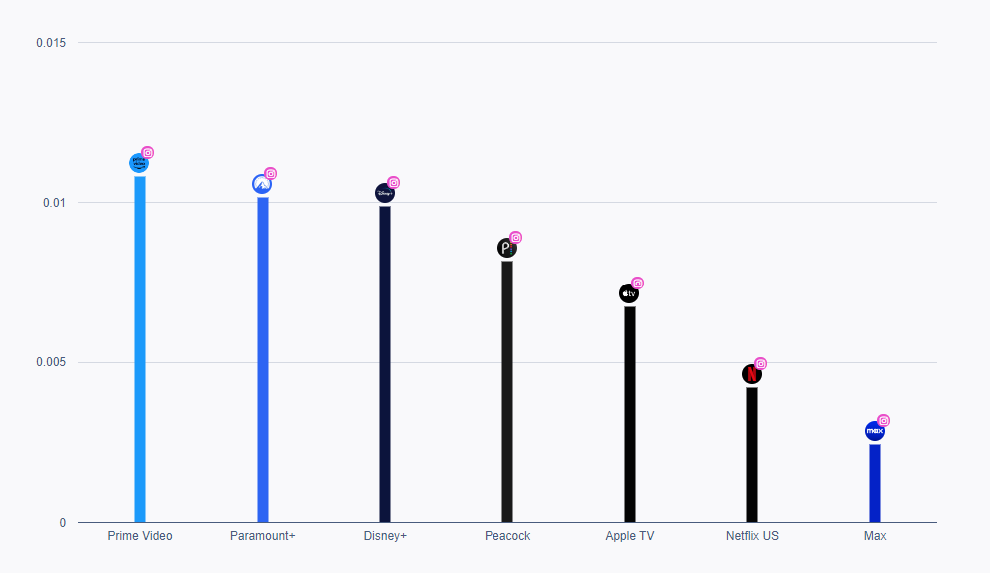
However, you might just want to better understand where your profiles should be at a minimum by simply looking at the average post interaction rate for all these Instagram profiles combined, as shown below.
We could, of course, do this analysis for every social media network in our study (Facebook, Instagram, Twitter, TikTok, YouTube), but you get the idea how a social media benchmarking analysis is done. One important thing to note about social media benchmarking in general is to be aware of the time period of the data you collect. For example, the data above is for the last 28 days (after being conducted in early March 2024). Therefore, the metrics are calculated for only this timeframe. While this can be adjusted to focus on a much longer or short time periods, or even a certain month or time of year, you should always be aware of the time period that your data set represents.
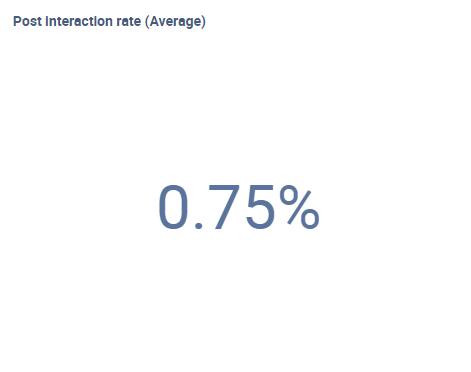
After you have done your social media benchmarking analysis, you can move on to your content optimization analysis. One of the main advantages of social media competitor analysis is that it can give you powerful insights related to how you can improve your content. Below, we will highlight a few different types of content optimization analyses you can do.
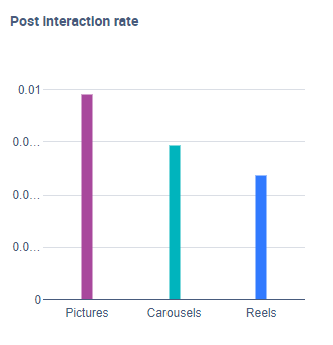
Let’s start with looking at what content formats you should consider posting. For instance, on Instagram, should you post images, carousels, or reels if you want a high post interaction rate. With our social media competitor analysis, you can use the data from the profiles in your data set to analyze what content format has the highest average post interaction rates.
You can see here that pictures perform better than both carousels and reels for the profiles in your data set. Therefore, you should consider creating more posts with pictures if you are looking to increase your average post interaction rate.
However, you can also take a more holistic approach by looking closely at individual posts across different metrics. You can do this by creating a metric table on a post basis with the choice of filtering metrics that interest you. You can see an example of this below relating to the TikTok posts across the various profiles we are tracking.
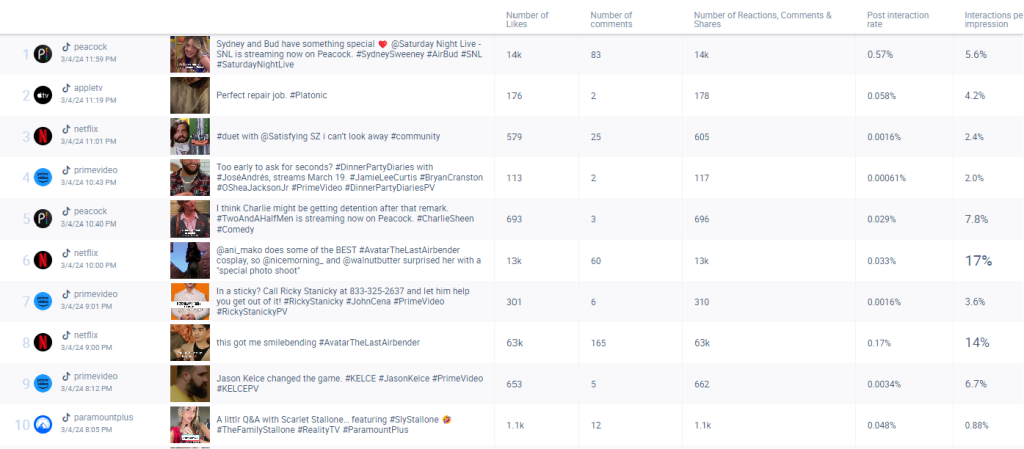
Another popular analysis is finding the best time to post. We have covered the entire process of finding the best time to post on social media before, but we should mention here that you can use the data compiled in your data set to find out what times of the day correspond to higher post interaction rates. Below, we show the best times to post on TikTok for the profiles in our study.
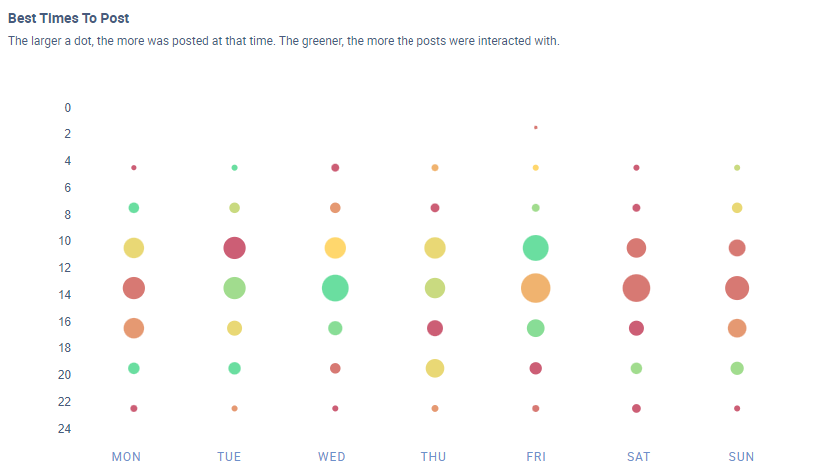
Another helpful analysis is finding out what hashtags you should use. Again, we cover this process in general in another article, but in your social media competitor analysis you can find what hashtags you should consider using in your posts. Below are the Top 10 hashtags in terms of post interaction rate for the Twitter profiles we complied in our data set.
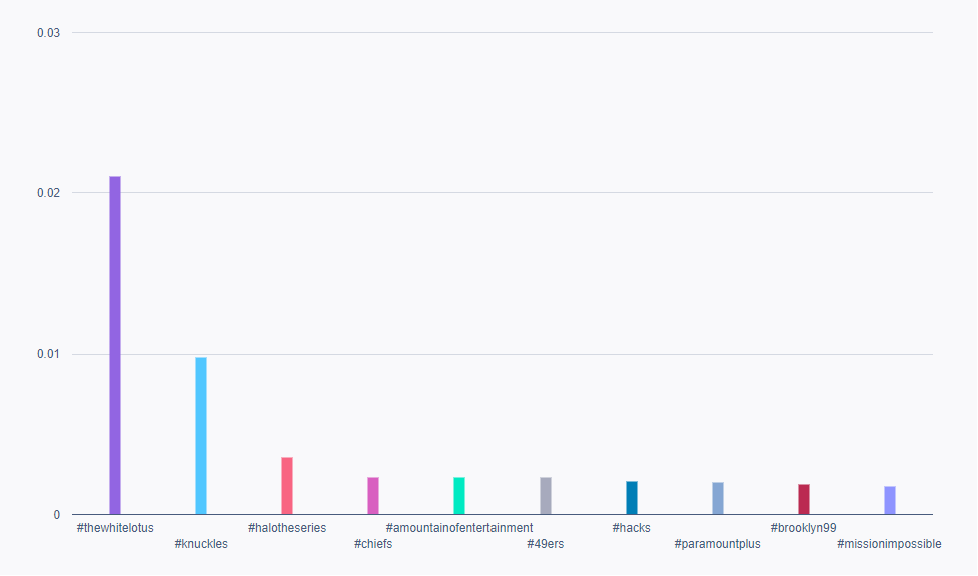
It is also important to know that you should look at different timeframes. In other words, you can combine all the data for the last year, or focus on specific weeks or months. You can also study month-over-month comparisons to get a better idea how various profiles improved or regressed from the previous month. One of the keys to successful social media competitor analysis is to study your data in different time periods and across different metrics.
Effective competitor analysis on social media is greatly helped by a social media tool that allows you to analyze data in various ways. Above, we showed you only a few of the analyses you can conduct with a tool such as Fanpage Karma. Once you have started with a social media tool, it is important to try it out thoroughly it so you have a good understanding of the different analyses you can perform.
Step 5: Implement your Findings in your Social Media Strategy
Social media competitor analysis and benchmarking is a great way of finding out how you compare to your competitors and helps you improve your own performance. However, once you have finished your social media benchmarking process and determined where you need to improve, you actually have to go out and implement what you have found. In this sense, one of the keys in learning how to do an effective social media competitor analysis is not only about finding out where you can improve, but also integrating your plan for your improvements into your actual social media content.
Perhaps you study your data (as shown in the previous step) and you see that images on Instagram posts have a higher average post interaction rate than Reels. This means that you should mostly likely start posting more images on your Instagram posts and use Reels more sparingly. You may also see from your analysis that you were not posting at ideas times. In this sense, you should try to times that your analysis indicates would correlate with higher post interaction rates.
Apart from running competitor analysis on social media, there are other aspects you should look for in a social media tool that relate to helping you improve your content creation process. For instance, content publishing features should help enable the brainstorming ideas with your team as well as provide with you with the latest AI technology for image and content creation.

Step 6: Monitor your (and your Competitors’) Progress
Once you have done competitor analysis on your social media profiles, discovered how to improve your performance, and implemented your plan, you are done, right? Not quite. Continued monitoring of not only your own performance and that of your competitors is important. There are a few key reasons why this is the case.
First, it is important to continually benchmark your yourself to see if you are making progress. After all, the results of your social media benchmarking analysis are not static. Even if you are making improvements, you should keep an eye out to see your competitors are making more progress.
Second, you should continue to run the analyses as we described in the previous steps in order to see how behaviors and trends may be developing. In all, competitor analysis on social media is continuous, and the content your target audience likes may evolve over time.
In addition to following your progress, you need to continue to monitor your community and the interactions they have with your account. It is widely known that community management is an important part of building your following and increasing engagement rate for YouTube, Instagram, TikTok, etc. Many social media tools have community management features available for helping you stay on top of this task.
Social Media Competitor Analysis
As we have discussed above, if you want to do effective competitive analysis on social media, you need to have a process and use an advanced social media tool. Knowing who your competitors are and what you want to get out of your social media competitor analysis are key first steps. Social media benchmarking allows you to see how your profile compares to that of your competitors and helps you in setting your own goals. The different types of content analyses that you can perform with the right social media tool then can start discovering areas where you can improve. Importantly, you need to implement what you have found and continue to monitor your progress as you go.
If you want to perform the entire social media competitor analysis process yourself, Fanpage Karma offers a free 14-day trial of its social media tool. This social media tool is industry-leading not only because of the powerful benchmarking and content analysis features, but also because it offers unlimited profile tracking. It also comes with community management, publishing, and research features.
You can also participate in one of the free weekly webinars that Fanpage Karma offers to learn more about the tool.




